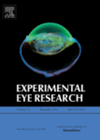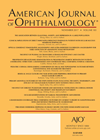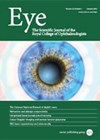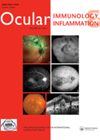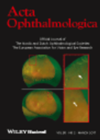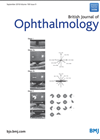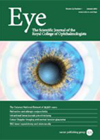
Journal Reviews
Retinitis pigmentosa (RP) associated cystoid macular oedema (CMO)
This is a review article from two units in the UK and Australia, highlighting the supporting evidence of possible pathogenesis and treatment modalities of CMO in RP. The authors proposed that the likely mechanisms for RP-CMO involved the breakdown of...
A possible biomarker for diabetic retinopathy
Diabetic retinopathy (DR) is the most common form of diabetic eye disease, characterised by exudates, microaneurysms and haemorrhage. Early diagnosis is crucial for preventing visual loss. The risk of developing diabetic retinopathy is known to increase with age as well...
A standardised strategy for uveitis etiological diagnosis
This was a prospective, non-inferiority, multicentre randomised control trial, which aimed to assess the effectiveness of a standardised approach in the etiological diagnosis of uveitis versus an open strategy, where clinicians could perform any test. The authors developed their standardised...
OCT angiography in PAMM secondary to CRVO
Paracentral acute middle maculopathy (PAMM) is a recently described manifestation presenting with hyperreflective bands within mid retina on spectral domain optical coherence tomography (SD OCT). The current view is that these findings are markers of ischaemia of deep retinal circulation....
Finasteride and central serous chorioretinopathy
The pathophysiology of central serous chorioretinopathy (CSC) is complex and has not been fully elucidated. Suggested theories include hyperpermeability and increased hydrostatic pressure in the choroidal vasculature, which creates RPE detachments overwhelming the RPE barrier function, leading to accumulation of...
HLA-B27 anterior uveitis
HLA-B27 has previously been shown to have an association with uveitis, ankylosing spondylitis, reactive arthritis, ulcerative colitis and psoriasis. The authors of this review provide an update of the epidemiology of HLA-B27 associated ocular disorders. There is great variation amongst...
How many injections in nAMD: ranibizumab vs. aflibercept
Intravitreal anti-VEGF injections make up a large proportion of the workload in ophthalmology clinics. Since the introduction of aflibercept with eight weekly injections there has been an option to use a treatment which may require less treatment, with potential cost...
Vitrectomy after ocriplasmin for VVMT adhesion of MH study
This is a multicentre retrospective study of 51 eyes that received intravitreal ocriplasmin between January 2013 to January 2014 for symptomatic vitreomacular (VMT) +/- macular hole (MH), and then went on to PPV for persistent pathology, comparing a control group...
Treat and extend for PCV
This South Korean study investigated the efficacy of a treat and extend regimen (TER) using ranibizumab to treat polypoidal choroidal vasculopathy (PCV). Twenty-nine eyes were included in this retrospective case note review. Of these, five eyes had been treated with...
Preoperative RPE alterations in macular holes
This retrospective interventional case series from Japan assessed whether preoperative alterations of the retinal pigment epithelial (RPE) in idiopathic macular holes correlated with postoperative functional and morphological changes in the macula. Fifty-nine eyes had preoperative Spectralis OCT using the ‘detailed’...
An alternative to povidone-iodine for intravitreal injections?
While povidone-iodine (5% aqueous) preparations have historically been considered the most effective antimicrobial prophylaxis for ophthalmic procedures and have been adopted as routine for intravitreal injections, post-procedure pain is a commonly recognized adverse event of IVI and has typically been...
Licence to save: a UK survey of anti-VEGF use for the eye
This comment article highlights the controversy that exists in the choice for anti-VEGF drugs used for treatment of macular oedema and wet age-related macular degeneration (AMD). Two existing licensed drugs for macular oedema are ranibizumab (Lucentis) and aflibercept (Eylea). A...


